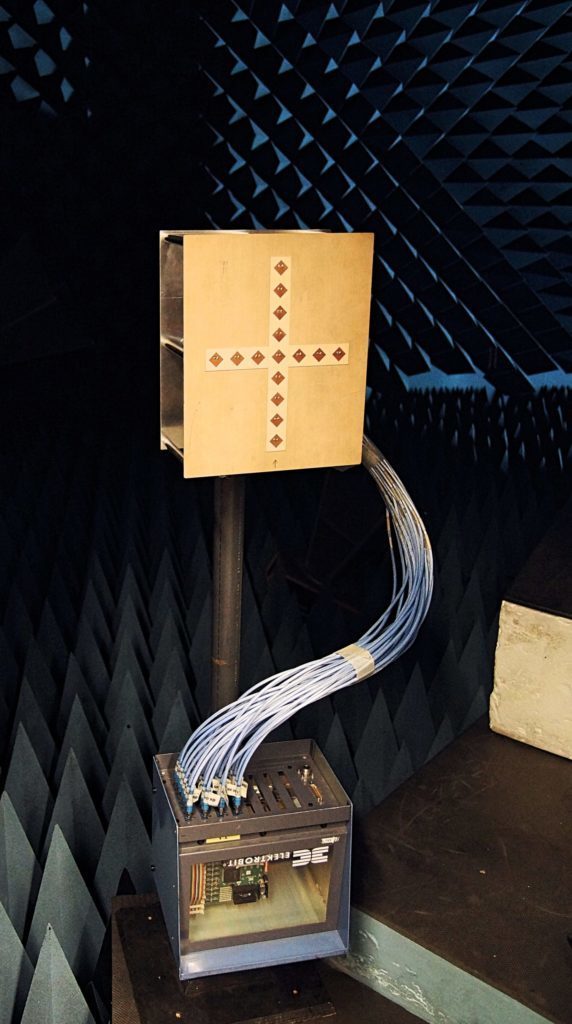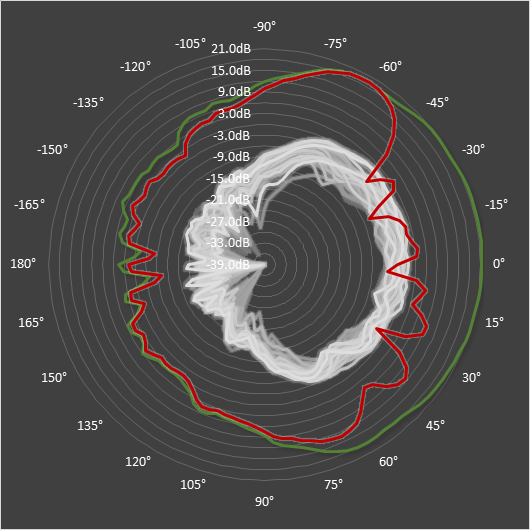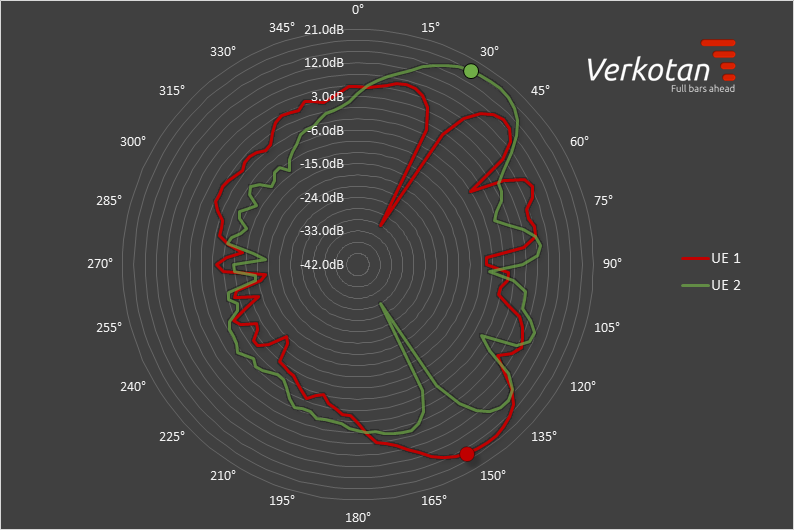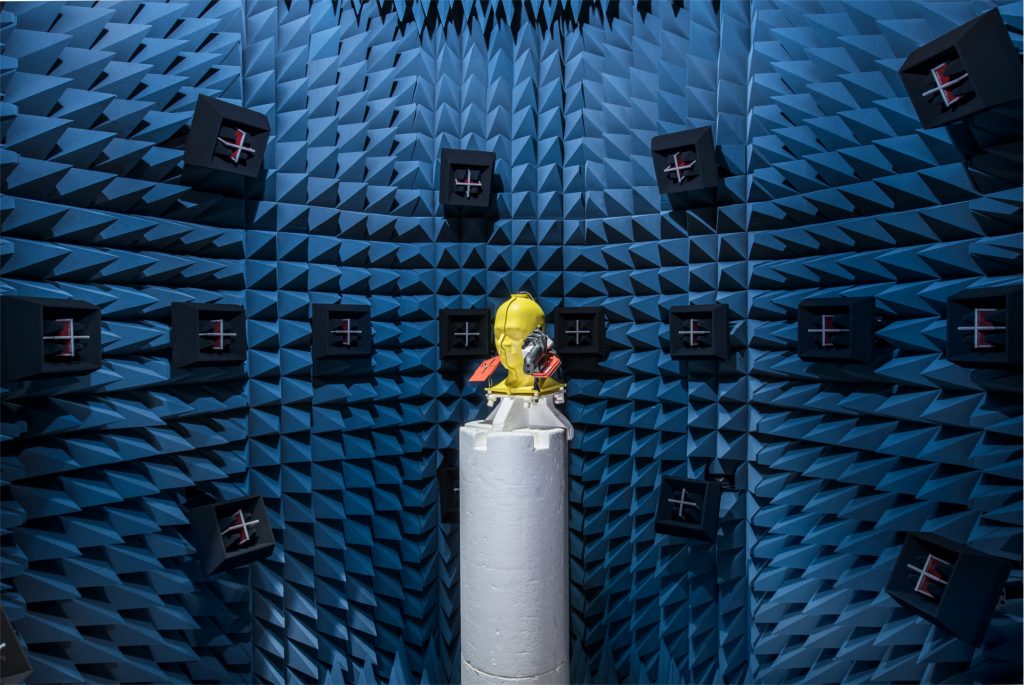5G Wireless and Beamforming, Multi-user MIMO and Massive MIMO
Antenna Pattern measurement
Antenna is often considered to be the most important element in a receiving system, as its properties strongly influence the overall performance. In the antenna pattern measurement the magnitude and phase of an electromagnetic signal received or transmitted from the antenna under test (AUT) are measured.

Antenna array
Antenna array is simply an array of antenna elements. In this case we have used planar antenna array of 15 dual polarized antenna elements illustrated on Figure 1 on the right. Antenna is operating at 5GHz frequency range and has horizontal and vertical arrays of antennas. Each of the 30(=2×15) antennas’ amplitude and phase are measured separately. This enables us to study how beamforming and multi-user MIMO works in practice with base stations.
Beamforming technology
Modern radio networks use beamforming technology in order to enable the efficient use of the spectrum. Beamforming technology i is a technology that projects the signal in a specific direction. Traditionally the signal is sent in all directions or a fixed direction. Beamforming is achieved by changing phases of multiple antenna elements. As a result, you get a better Wi-Fi signal for your devices.
Beamforming can be achieved by adjusting phases of multiple antenna elements. The more antenna elements are used the greater gains in radio link can be achieved. In the figure below, we can see the animation of beamforming for angles ranging from -60° to 60° degrees. Individual antenna element radiation patterns are colored in grey. The red line in Figure 2 presents a combined antenna pattern with phases optimized to maximum gain to a given angle.

On average about 22dB gain over single antenna element for sector -60° to 60° can be achieved with this antenna array. If we normalize total power of single antenna and antenna array to equal, there is still about 11dB directivity gain for the array antenna. This greatly helps to improve the connection quality. You can find more information about beamforming antennas from our Beamforming Antennas –How they work and are tested? -article.
Verkotan provides 5G beamforming antenna measurements to verify the performance of wireless equipment.
MIMO
MIMO stands for multiple input and multiple outputs. It has a single principal claiming that a wireless network allows transferring of more than one data stream simultaneously over the same radio channel. MIMO provides fast and resources efficient data transmission.
Multi-user MIMO
Multi-user MIMO can be considered as an extension to beamforming. In comparison to standard MIMO, the base station has multiple data streams to different devices simultaneously. The idea is not only to maximize the signal level in one direction, but also to minimize the signal levels to other user equipment (UE) directions. This can be successfully done if the base station has enough antenna elements compared to UEs. The illustration below shows how Multi-user MIMO works in the case of two UEs.

In Multi-user MIMO, it is important that all, but one antenna patterns, have minimum signal levels to the UE direction. This enables simultaneous communication to multiple UE’s with minimized interference from other UE’s signals.
In Multi-user MIMO user equipment complexity can be kept low and most of it is in the base station (BS). Down side is that base station needs accurate channel estimation for all the UE’s in the network.
- Massive MIMO
In comparison to multi-user MIMO networks, massive MIMO is using a high number of antennas in the base station. It can be seen as a direct extension of Multi-user MIMO. With more antenna elements BS can serve more U’Es simultaneously and therefore has better beamforming performance at the same time. This significantly improves the capacity and range of the base station.
By using antenna arrays covering 360°, one can avoid traditional antennas sector border problems. As massive MIMO base station can optimally adapt to the movement of the UE in different directions. This works like the soft handover in WCDMA.
Antenna element can also be located in different base station locations. This enables to perform handovers from different antenna locations in optimal way.
What our Chief Scientist Jani Kallankari says about 5G wireless testing?
If you have any questions, need assistance, please contact us.
